When Alice (not her real name) visited a home-based salon for an injectable filler treatment, she never imagined that it would lead to what was possibly the most nightmarish four weeks of her life.
She had found the salon on Instagram and even though it operated out of an HDB flat, the salon boasted good reviews online. Even Alice’s regular beautician assured her that her own customers had good results with this salon.
It also didn’t hurt that this home-based salon charged significantly lower fees — about S$300 — for its injectable filler treatments. The same treatment would have set her back S$800 to S$1,000 at a proper aesthetics clinic.
She recalled that the injection was painful and there was bruising on her face after. More concerning, however, was the appearance of a small lump at the injection site.
The salon operator brushed Alice’s concerns away, assuring her that the lump and bruising would go away in a couple of days.
Fast forward to two weeks later: Not only was the lump not gone, it had swelled up and spread across her face. By the third week, the engorged lump had moved away from the original injection site.
Alice was traumatised. “As I searched online about possible side effects, I thought I had scarred myself for life.”
The unsightly lump on her face made Alice extremely self-conscious whenever others looked at or talked to her and so she started to avoid social gatherings.
She was on an emotional rollercoaster ride, she said:
“I remembered crying to sleep every night during that period.”
Fortunately, when Alice visited a plastic surgeon for professional help, she was informed that it could be treated.
The plastic surgeon informed her that the filler was injected into the wrong skin layer and after he injected the lump with hyaluronidase, it dissolved within a week.
Treatments by non-registered personnel are risky
Uncertified home-based aestheticians like the one whom Alice visited are not uncommon according to aesthetic doctor and founder of Ageless Medical, Lam Bee Lan.
There have even been reported cases of foreign doctors who come to Singapore to provide unauthorised cosmetic treatments in hotel rooms.
This is partly because demand for injectable aesthetic procedures like fillers is on the rise.
 According to aesthetic doctor and founder of Ageless Medical, Lam Bee Lan, demand for injectable aesthetic procedures like fillers is on the rise. Image courtesy of Lam.
According to aesthetic doctor and founder of Ageless Medical, Lam Bee Lan, demand for injectable aesthetic procedures like fillers is on the rise. Image courtesy of Lam.
10 million injectable aesthetic procedures were performed in 2019, according to the International Society of Aesthetic Plastic Surgery (ISAPS), an 8.6 per cent increase from the year before.
The top injectable procedures worldwide? That would be botulinum toxin (better known by its brand name Botox) followed by hyaluronic acid filler injections.
In Asia, “injectable skincare” such as Profhilo, an injectable hyaluronic acid to treat skin laxity, are increasingly popular.
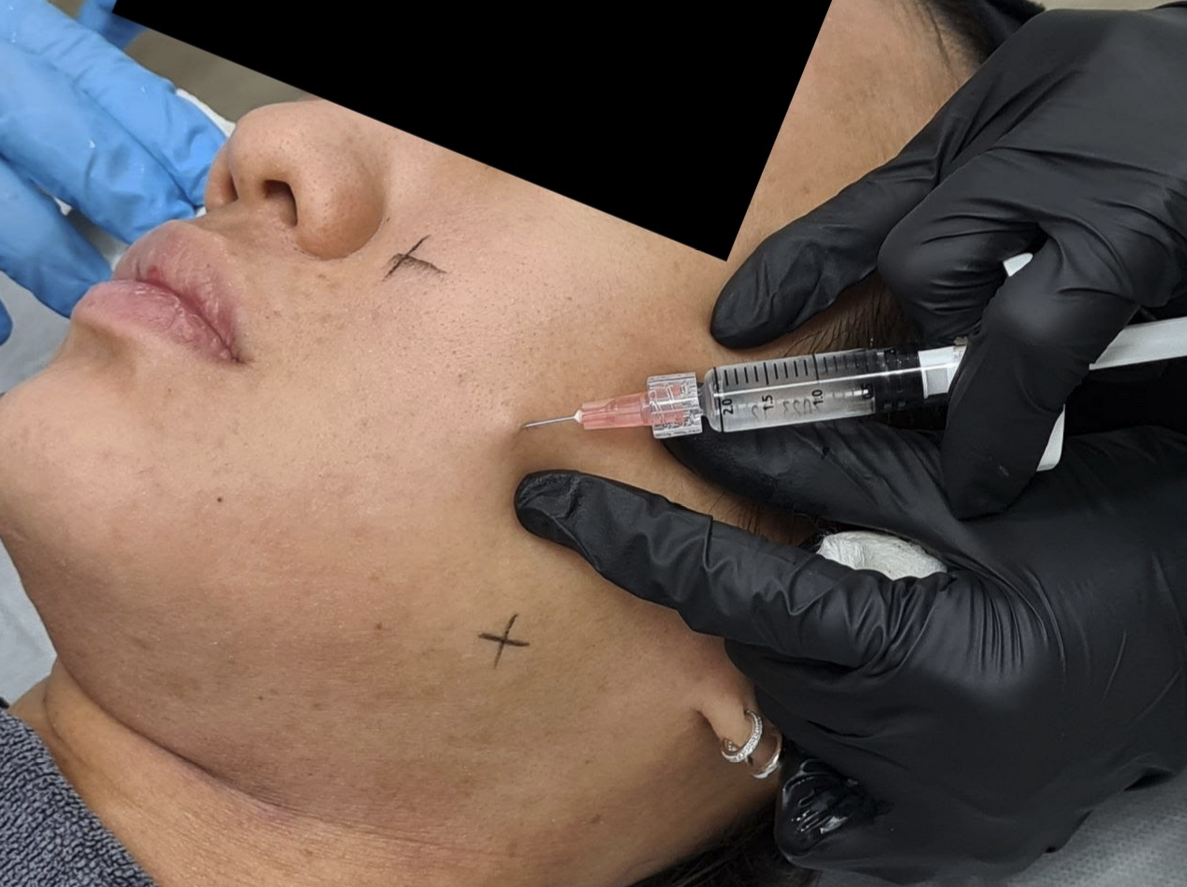 More and more people are seeking aesthetic procedures like fillers and botulinum toxin, and they’re getting younger. Lam surmised that this is due to the prevalence of selfies and visual-based social media like Instagram. Image of a patient receiving Profhilo treatment. Credit: Joshua Lee.
More and more people are seeking aesthetic procedures like fillers and botulinum toxin, and they’re getting younger. Lam surmised that this is due to the prevalence of selfies and visual-based social media like Instagram. Image of a patient receiving Profhilo treatment. Credit: Joshua Lee.
However such treatments are expensive, with price tags that often run into the thousands. And so customers turn to cheaper alternatives, like home-based salons or travelling doctors who ply their trade in hotel rooms.
This is very risky, said Lam:
“This is dangerous as not only can the injectables used be unauthorised, these people are also not authorised to perform the treatments. When complications arise, most times they cannot be contacted. In addition, the hotel room is not a safe and clean environment to perform such treatments.”
Botched aesthetic treatments can cause inflammation and ultimately skin necrosis (tissue death) like in the image below.
(Just a little disclaimer: The image below can be quite disturbing for some readers.)
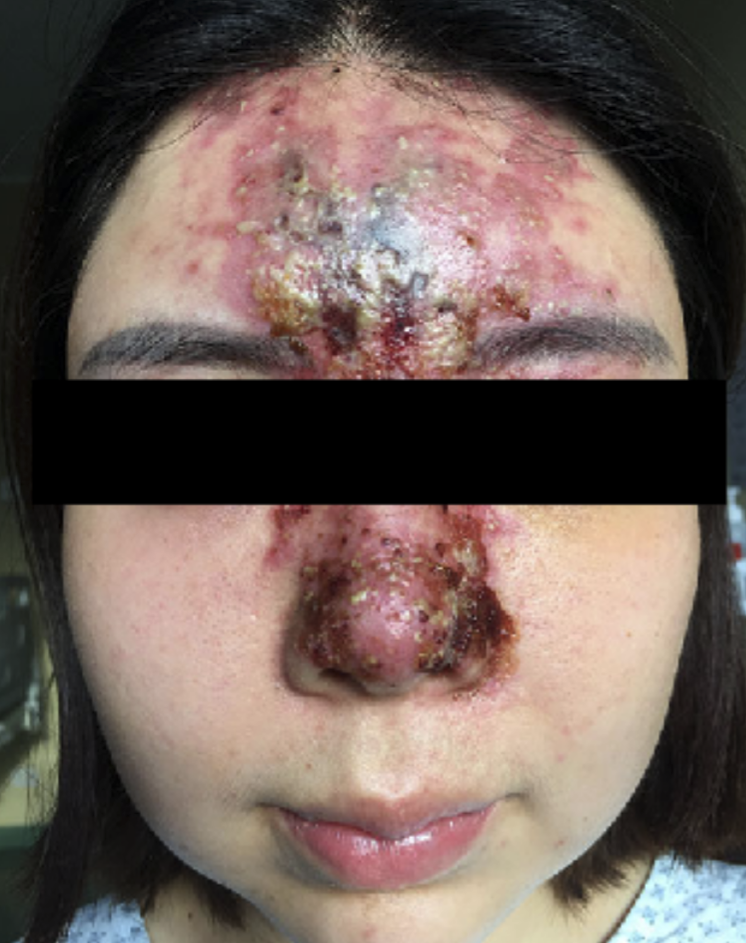 Tissue necrosis after a botched dermal filler procedure. Image via.
Tissue necrosis after a botched dermal filler procedure. Image via.
In rare cases, they can also lead to blindness, for instance, when an injected product travels via a blood vessel into one’s eye, or even death.
“Even if it makes you beautiful,” Lam advised, “it shouldn’t cost you your life.”
Look for registered doctors & do your homework
In Singapore, only licensed doctors (beauticians from your neighbourhood beauty salons don’t count) are allowed to perform aesthetic medical procedures like botulinum toxin and filler injections, and laser treatments.
Aside from possessing the right know-how to perform such procedures, for example, understanding facial anatomy as well as the latest procedures in the field, licensed doctors — especially the experienced ones — are also equipped to recognise complications (like a blockage in a vessel) and handle them swiftly, said Lam, who has more than 2 decades of medical experience, first as a General Practitioner, and then 17 years as an Aesthetics Physician.
Finding a licensed doctor is easy. You can do so on the Singapore Medical Council’s (SMC) Register of Medical Practitioners.
If you want to know if a particular aesthetic clinic is licensed, you can check out the Ministry of Health’s Listing of Licensed Healthcare Institutions.
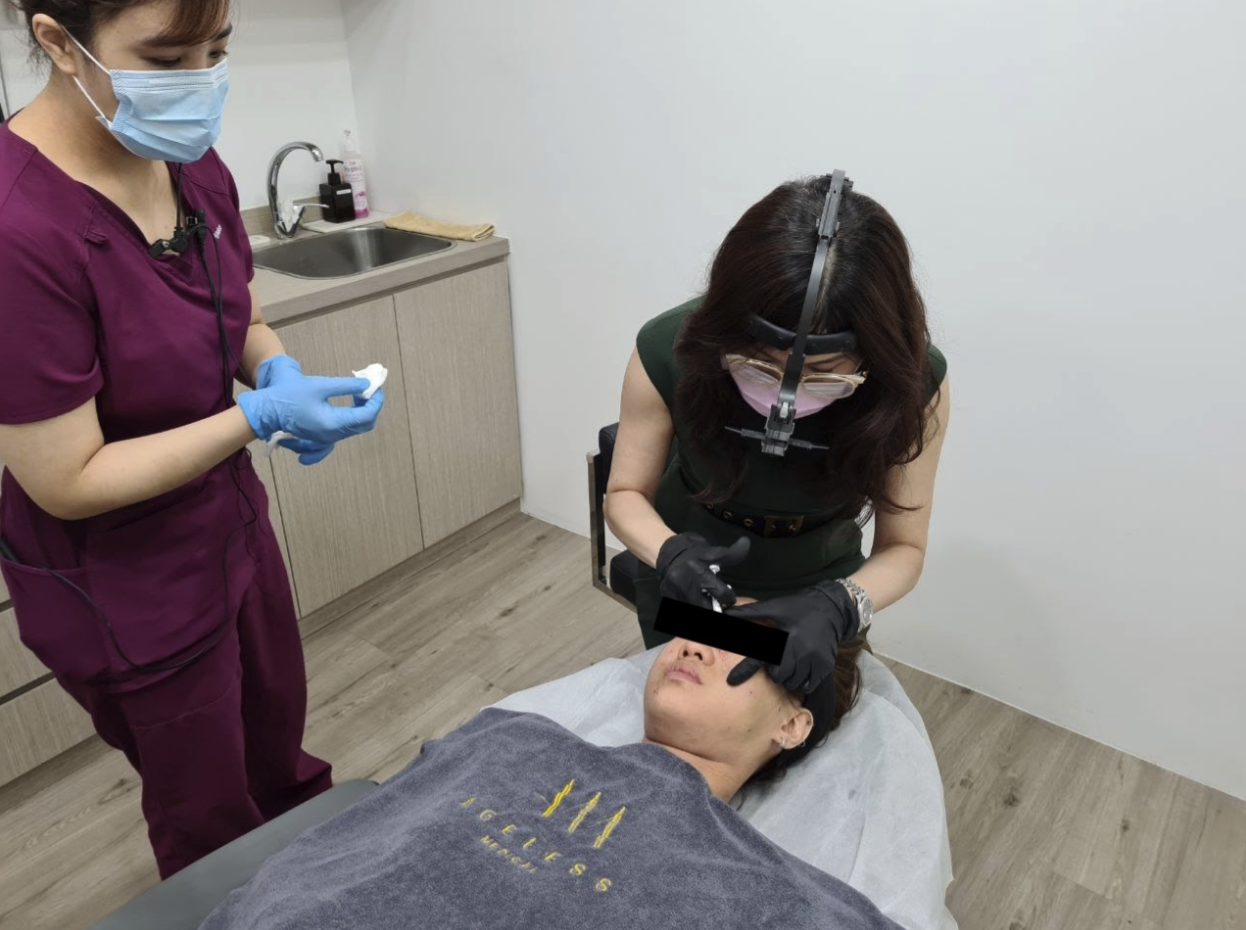 Licensed doctors like Lam have the knowledge and experience to perform aesthetic procedures and are equipped to handle complications that might arise. Image by Joshua Lee.
Licensed doctors like Lam have the knowledge and experience to perform aesthetic procedures and are equipped to handle complications that might arise. Image by Joshua Lee.
Lam also encouraged customers to do their homework beforehand.
Aside from reading reviews of doctors online, customers can go one step further by contacting manufacturers or distributors of certain aesthetic products to find out if these doctors have ordered said products or are trained in certain aesthetic procedures.
Lam used herself as an example. If a client wishes to come to her clinic for, say, Profhilo, they can contact Neoasia (Profhilo’s official distributor in the region) to find out if Lam’s clinic carries the authentic product, and if Lam herself is trained to administer the product.
In fact, because of her experience, Neoasia engages Lam to train other doctors in administering Profhilo.
Use authentic products from official sources
Admittedly, authentic aesthetic treatments are expensive, but for good reason. They often go through rigorous testing and certification to ensure that they are safe to use.
In addition, some products have specific logistical requirements that have to be adhered to for maximum effectiveness or safety — something that customers might not be assured of if they get parallel imports, or worse, fake products.
For example, injectable hyaluronic acid has to be kept between 2°C and 25°C.
This means that cold chain transportation is required from the time it leaves its manufacturing facility in Italy, flies all the way to Singapore, and reaches the client — something that home-based salons and parallel importers might not be able to provide.
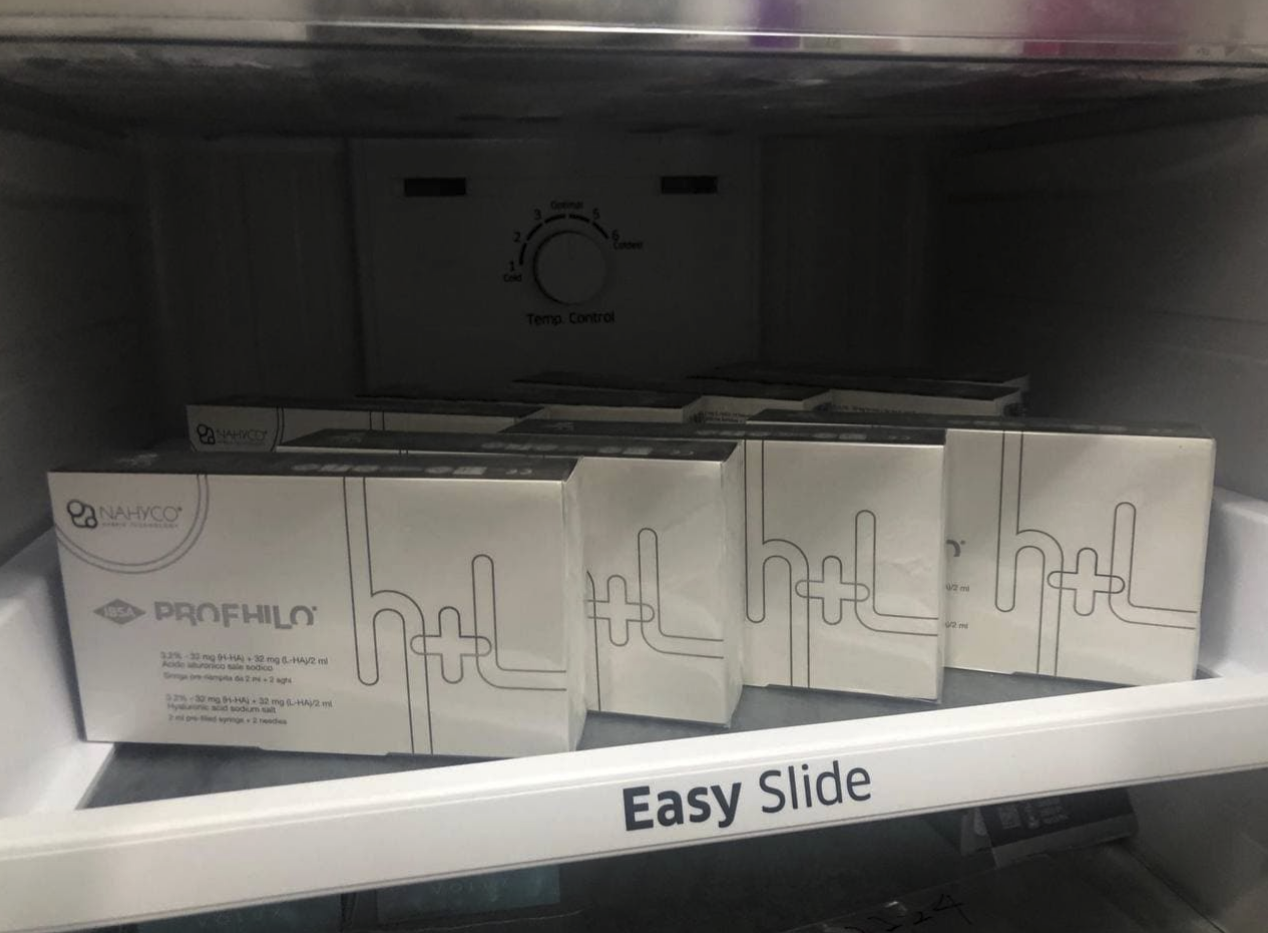 These boxes of Profhilo have to be transported via cold chain in order to remain effective and safe for use. Image courtesy of Ageless Medical.
These boxes of Profhilo have to be transported via cold chain in order to remain effective and safe for use. Image courtesy of Ageless Medical.
“With injectable hyaluronic acid like Profhilo, it’s very easy to grow bacteria if the temperature is not right,” Lam cautioned.
And it goes without saying that once hyaluronic acid is contaminated with bacteria, it cannot be injected into one’s face without the risk of complications.
“It’s very important to really educate our consumers that sometimes if a treatment or product is too cheap, you have to ask yourself, okay, why is this so cheap?”
Clinics can play a key role in verifying and choosing authentic products, said Lam.
Again, using the example of Profhilo, clinics who purchase it from official sources in Singapore, Malaysia, Vietnam, Indonesia, and the Philippines will find a Neoasia QR code authenticity sticker as well as a tamper-free serial number on each box of Profhilo.
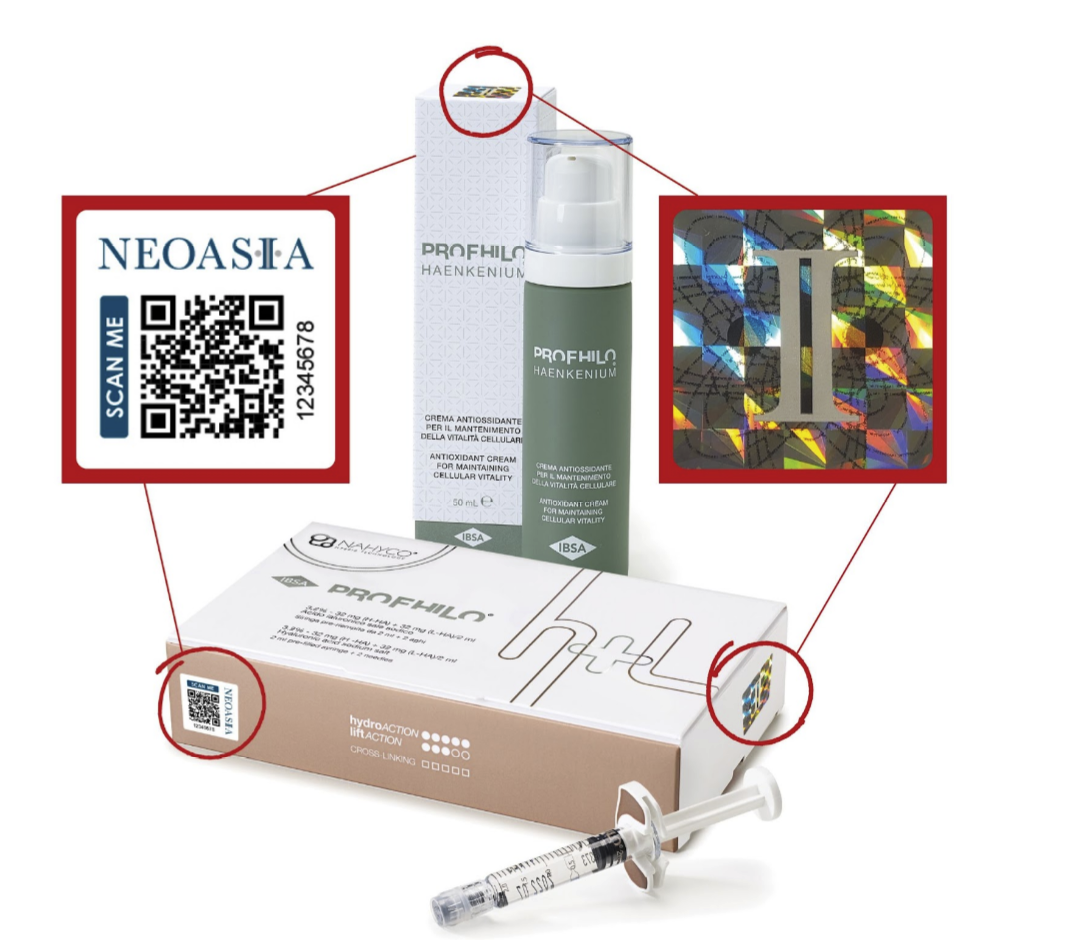 Each box of Profhilo comes with a Neoasia QR code authenticity sticker as well as a tamper-free serial number. Image courtesy of Neoasia.
Each box of Profhilo comes with a Neoasia QR code authenticity sticker as well as a tamper-free serial number. Image courtesy of Neoasia.
They can even scan the authenticity sticker to verify if the product is real, and hence, safe to use.
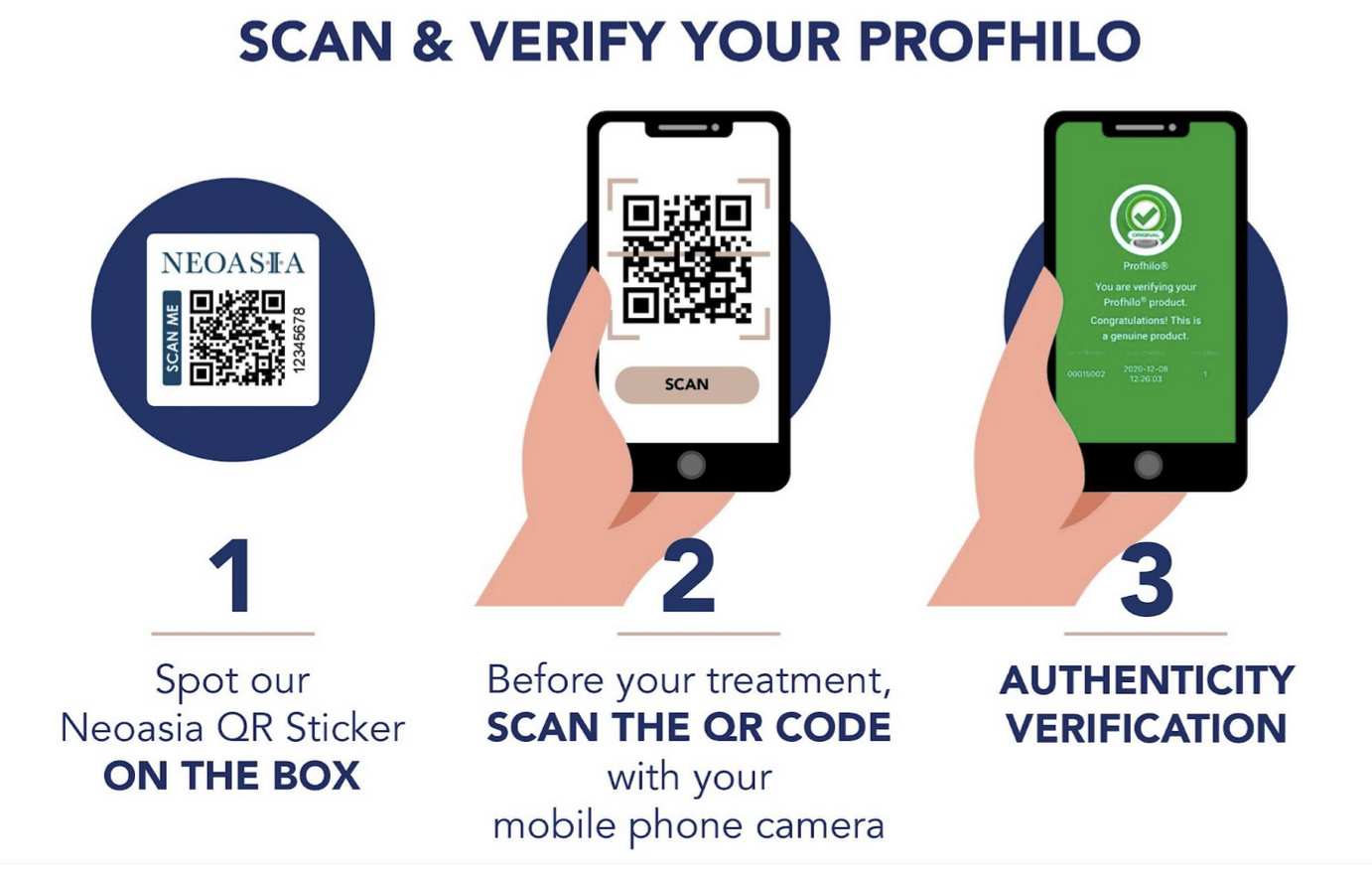 Image courtesy of Neoasia.
Image courtesy of Neoasia.
“I think it’s important for consumers to understand that the safety of the product is very important,” said Lam.
“And when the product is safe, it will give you the best results and optimise the outcome for whatever treatment that you’re asking for.”
Top images credit: Via, via. This writer is not brave enough to undergo injectable aesthetic procedures but thanks to this sponsored article by Neoasia, he knows that if he ever wants to, he should get it done at a licensed clinic.

